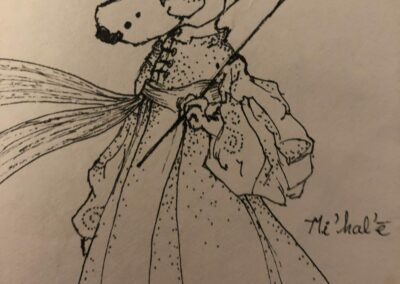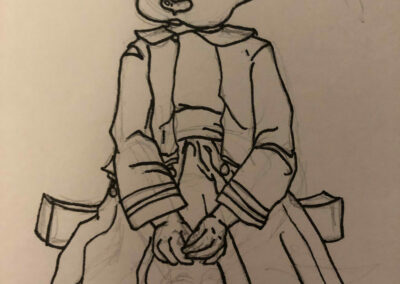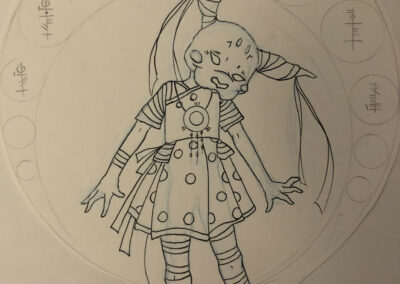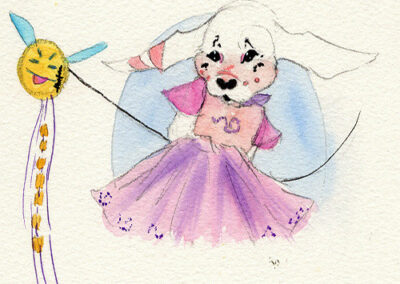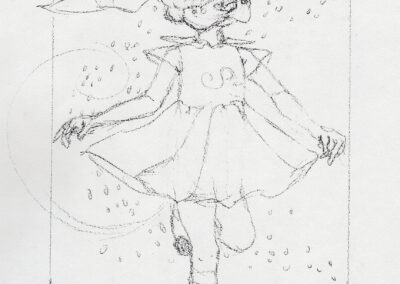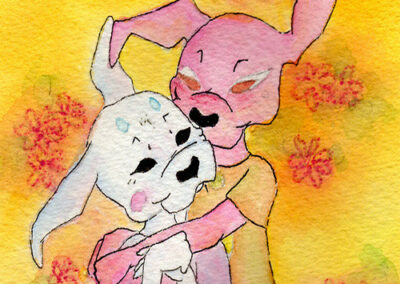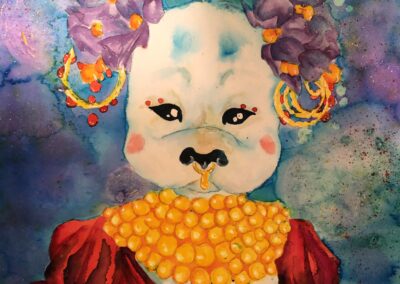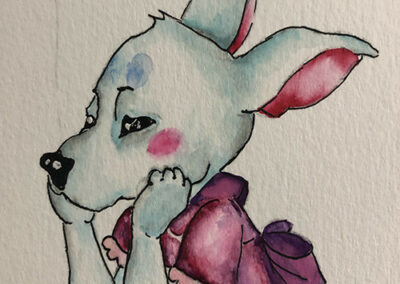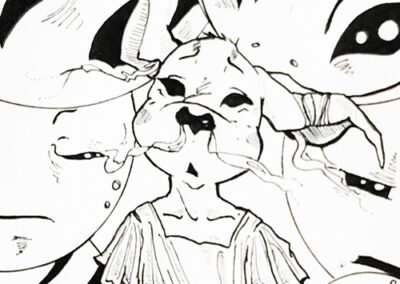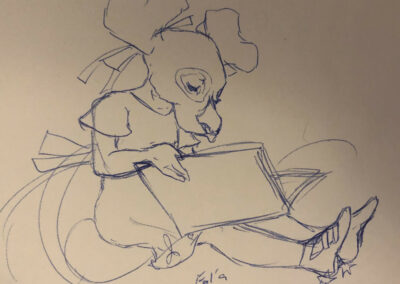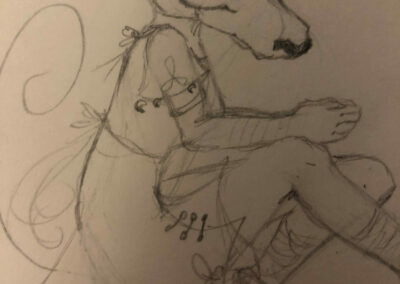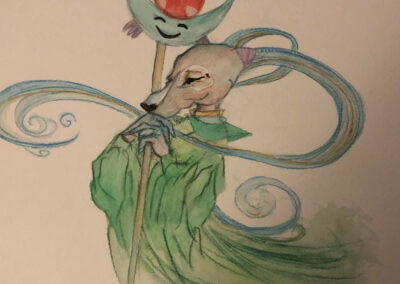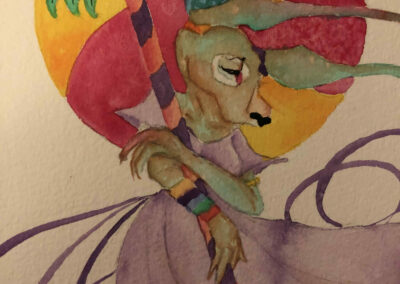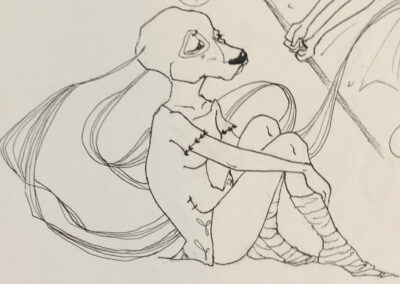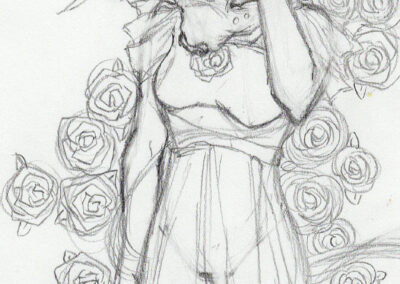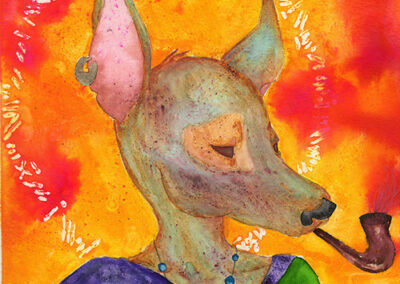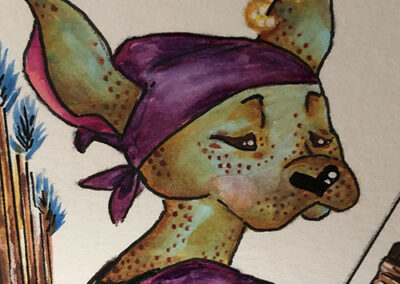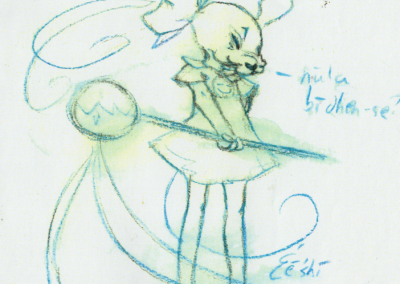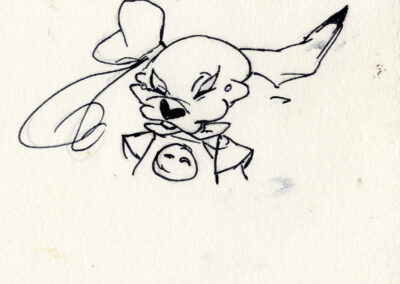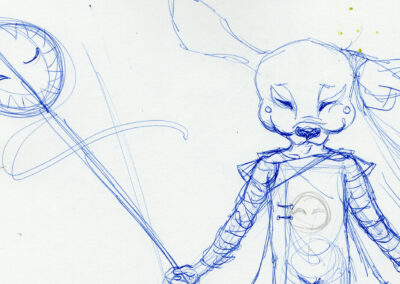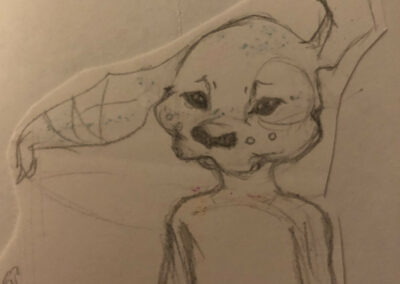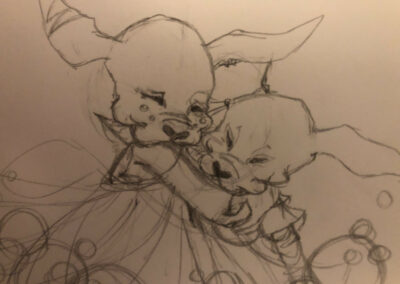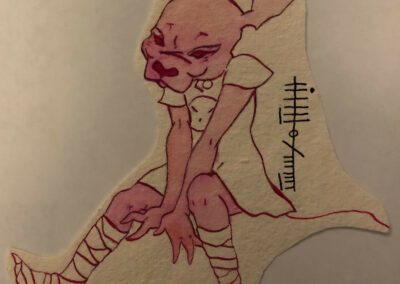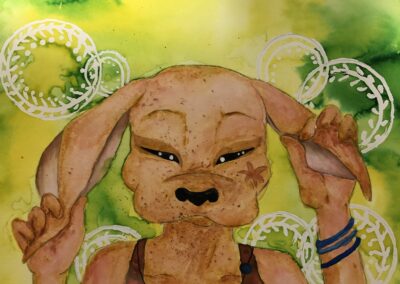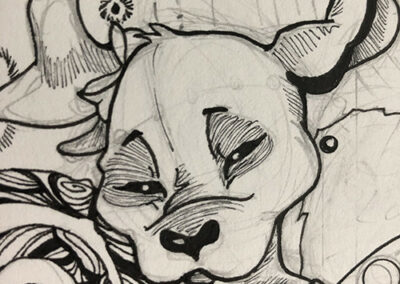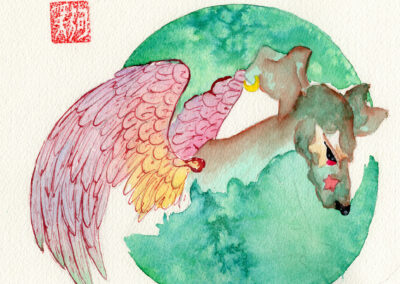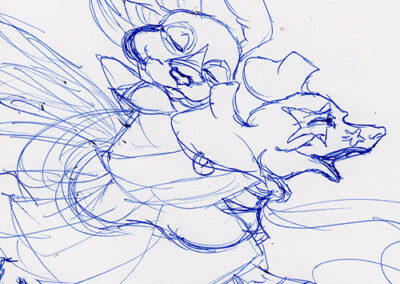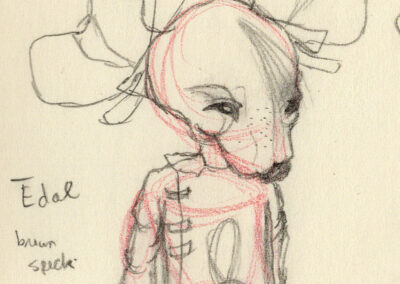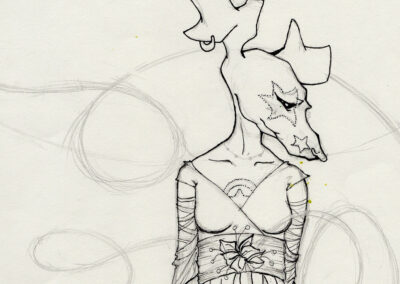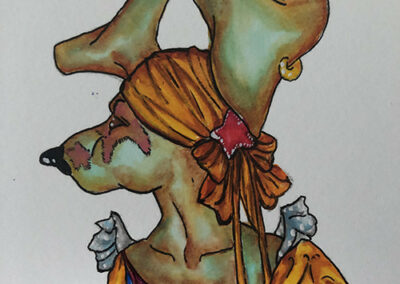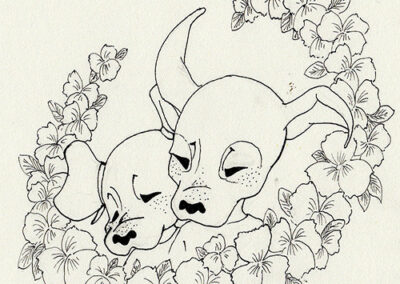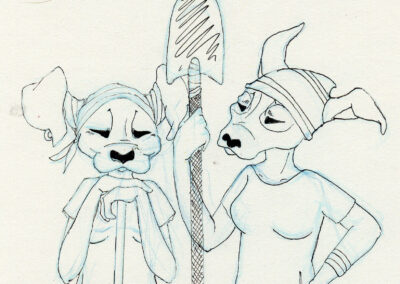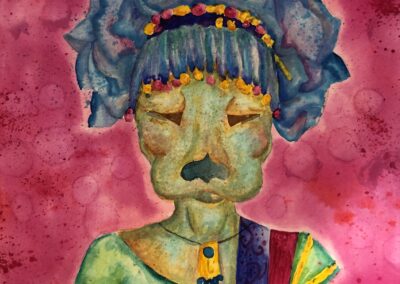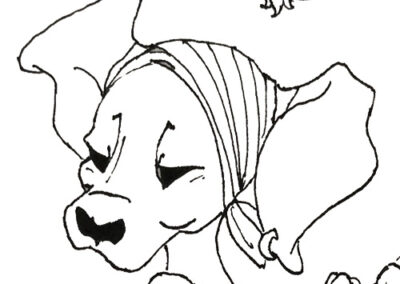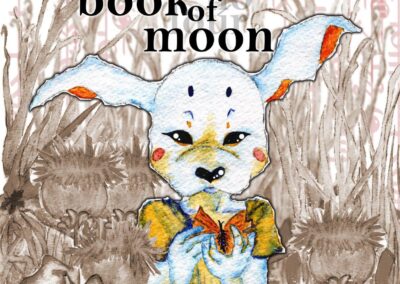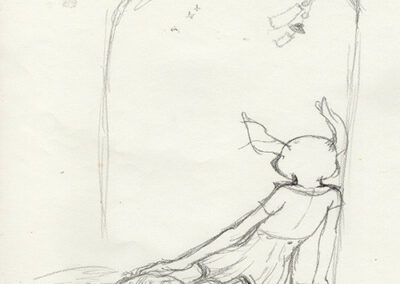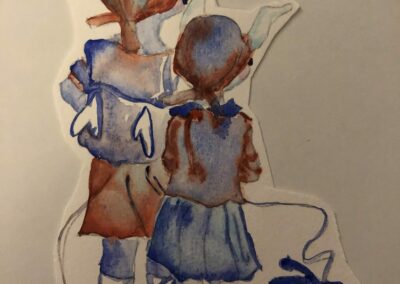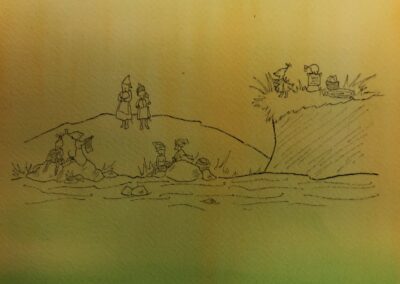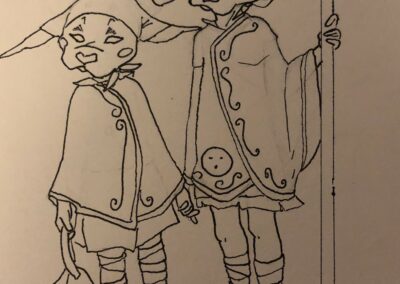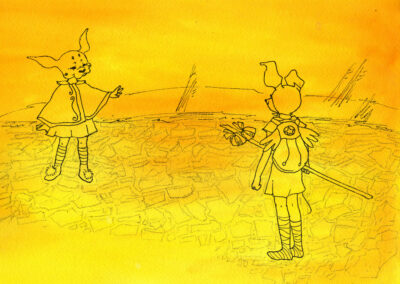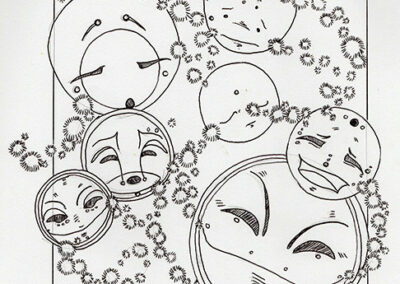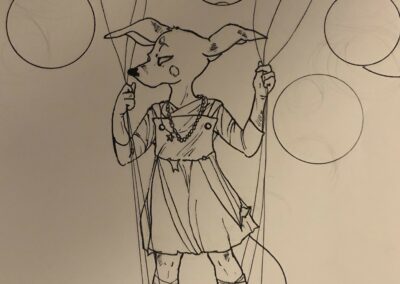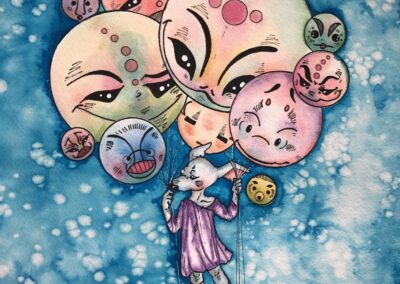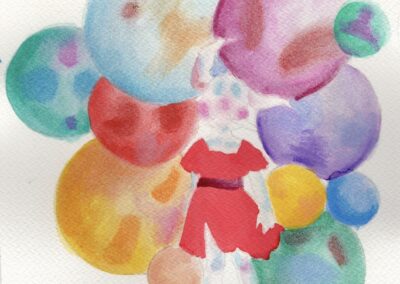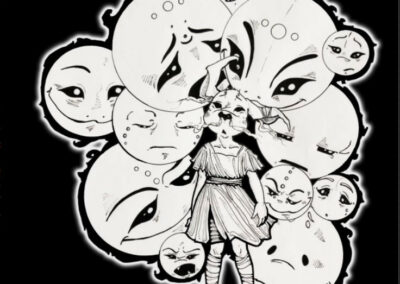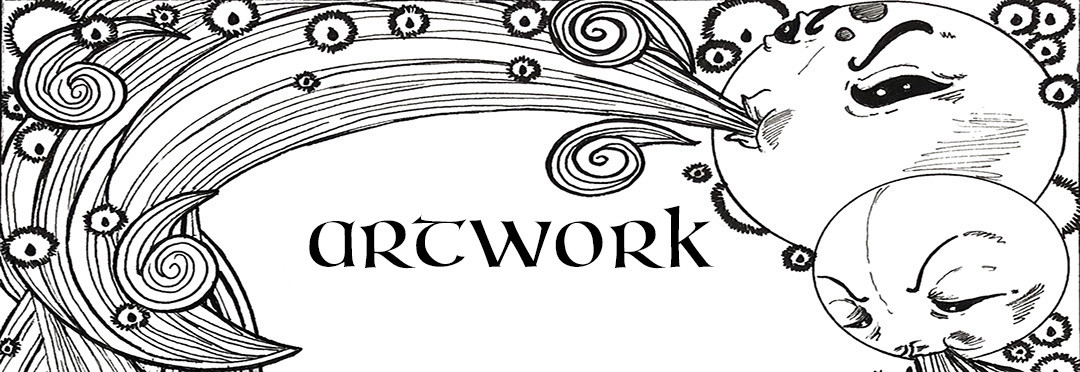
Concept art is a means of working out what a final product is going to look like or convey an idea before its final rendering and is usually used in animation, film, video games or anywhere an artist needs to communicate with someone else a “feel” before a product is finalized. When artists illustrate books, often their “concept art” is going either to a publisher or is a means to work out in their own minds what a final illustration or character will look like. Illustrations themselves further the text of a story and can fill in where the words might not do as well a job of depicting something to the reader as a graphic could. Deciding which parts of a story need an illustration can be tricky because ideally, both text and illustrations should do a decent job of depicting a scene or idea on their own. In fiction books there is a margin between what the writer sees in their heads when writing and what the reader sees. For example, when fiction books are made into movies, some fans are very disappointed with a film director’s take on what their favourite book’s characters look or sound like. Some writers welcome this as a reader taking the story as their own and fleshing out the world in their minds from the page. In other instances, a writer is very closely acquainted with their book’s world and chooses to allow illustrations in parts of the text where they wish no mistake to be made in how the scene should be interpreted or how a character should look. The Book of Moon includes illustrations to be a guideline for the characters’ appearances and over the years with the evolution of the story, many illustration concepts have come and gone. Below you will find various characters and their earlier forms leading up to how they appear in the final printing.
Mi’hal’ē: Mi’hal’ē’s identity never changed much but in earlier drafts she was much more the center of the story and had more chapters dedicated to her which were condensed more and more as years went by. Originally she was usually depicted with her emblem, the dūūcerfrūt, and a short staff. He facial markings were also much larger and more to one side of the face. Her very first appearance as an illustration was drawn in a psychiatric hospital on some scrap paper with a ballpoint pen.
F’ala: F’ala began as a child character, possibly as a friend for Mi’hal’ē. As she developed she was rewritten completely as an adult but with a more Guardian-like role and then re-written as Mi’hal’ē’s caretaker, a less important status, and then again as Mi’hal’ē’s dl’ah’sha. Her look changed dramatically as she fleshed out as a character, beginning as a child villager to a more “magical” adult type to the independent, self-reliant Ta-. She was not always speckled; her outer markings were originally 2 large circles around the eyes reminiscent of glasses, and a long mark down the nose. What has never changed about F’ala is that she has always been close friends with Rā-alta.
Éē’shī: While Éē’shī has always been a Guardian, she was originally much younger than Mi’hal’ē and the two of them were much closer in relationship, with Éē’shī being much more snarky towards F’ala. Éē’shī has aged but otherwise hasn’t changed much.
Rā-alta: While F’ala has gone through a long evolution, Rā-alta is probably the character who has undergone the most changes. In early drafts, Rā-alta only really existed in relation to F’ala, as her gentle classmate in the Halls of Learning. But before the first draft, Rā-alta existed in a series of poems about the análong and had no backstory. Her first appearance is as a darna who has a shanár child; that child would later become Mi’hal’ē. At various points in rewrites, Rā-alta and Mi’hal’ē separated, Rā-alta became an Elder and her connection to F’ala became much stronger. While Rā-alta was always from the north and always had her distinctive star marks, her backstory was one of the last things written, as chapters had to be added in for her. Of all the characters, Rā-alta is the only one whose demeanor is based on an actual person the author knew.
Ā’dō: Ā’dō has changed very little over the years; she was always F’ala’s little sister raised back in the village while F’ala made her way in the world. Ā’dō had a lot less dialogue with F’ala in earlier drafts and more scenes with Mi’hal’ē.
